
Let’s say you have big-time dreams of drag racing in a class that seems out of reach—a class that’s filled by racers with big-time budgets to go with big-time performances, and your budget is minuscule by comparison. What’s a racer with motor oil coursing through his veins to do? Put on his thinking cap and get to work, and that is exactly the case for one Jim Monson.
Monson was a failed bracket racer—that is, he was more excited about going faster than he was to run dead-on his dial with a zero—so naturally, the exploding heads-up racing scene of the late ’90s attracted his attention. Although he possessed an engineering degree, he didn’t really know the first thing about building a car. But he was determined to learn. Back then, the class to compete in was the now-defunct NSCA’s Super Street eliminator, and Monson set his sights on the program.

“I wanted to race but couldn’t afford to pay for a 25.2-spec backhalf car… so we built one ourselves,” says Monson.
First, he needed to locate a clean, suitable donor car, which wasn’t any easier back in 1998 than it is today. Here’s where the story gets interesting—and kind of funny.
“I put the word out that I needed a rust-free Fox body coupe for my new race car,” says Monson.
“Graham Jones had a supposedly clean Mustang near Atlanta, so I paid him the $800 he was asking for it and headed down from Michigan to pick it up. When I got there, I saw Graham holding his nose and dry-heaving in his mother’s driveway. It looked like he had drug the car out of a swamp and it smelled like every animal in Georgia had pissed in it. As an added bonus, the front frame rails were bent, and that was the only part of the car that I needed!”



Since he planned to build the car himself, he made the deal anyway, loaded the car up, and took it home, where he, along with best bud and one-and-only crew guy Neal Rice subsequently put on hazmat suits to clean the car out.
Monson knew that in order to afford to build the chassis he needed, he—along with Rice, who has been a mentor, tutor, and friend all wrapped up into one—was going to have to do the dirty work in-house. A relationship with Billy Carroll, who at the time was working for Chassis Engineering (and today works for Comp Cams) set him on the path to acquiring a chromoly backhalf chassis kit from the company, so he bought a welder, took the car to have the Mustang’s framerails straightened out, then started cutting, and cutting, and cutting. But for a guy who didn’t even know how to change his own oil until he was in his mid-20s, it was a hard-earned education in mechanical aptitude.
“Neal knew how to weld, and he taught me. I had no clue. I didn’t know how to notch tubing either. It took me until about two years ago before Neal would actually let me use tools. He still gets a little nervous sometimes, but he trusts me now. We just started figuring out how to do it,” says Monson.





They set about building the chassis, which was state-of-the-art at the time, and then finished the rest of the car around it, taking great care to stiffen the Mustang wherever possible and triangulate many sections of the chassis. This has had good and unintended effects, as it has forced him to be much more precise with chassis and suspension adjustments. At the beginning of the car’s life, its stiffness caused Monson to chase the chassis setup a bit until he really learned what the car likes, and even today the chassis can be a bit more touchy than a more-forgiving car would be on a marginal track surface. This challenge is amplified by the fact that the car is currently raced on all-or-nothing radial tires in the Limited Drag Radial class. The car—christened Gumby many years ago, thanks to the slick two-tone green paint scheme that adorns its flanks—is reliable, consistent, and quick.
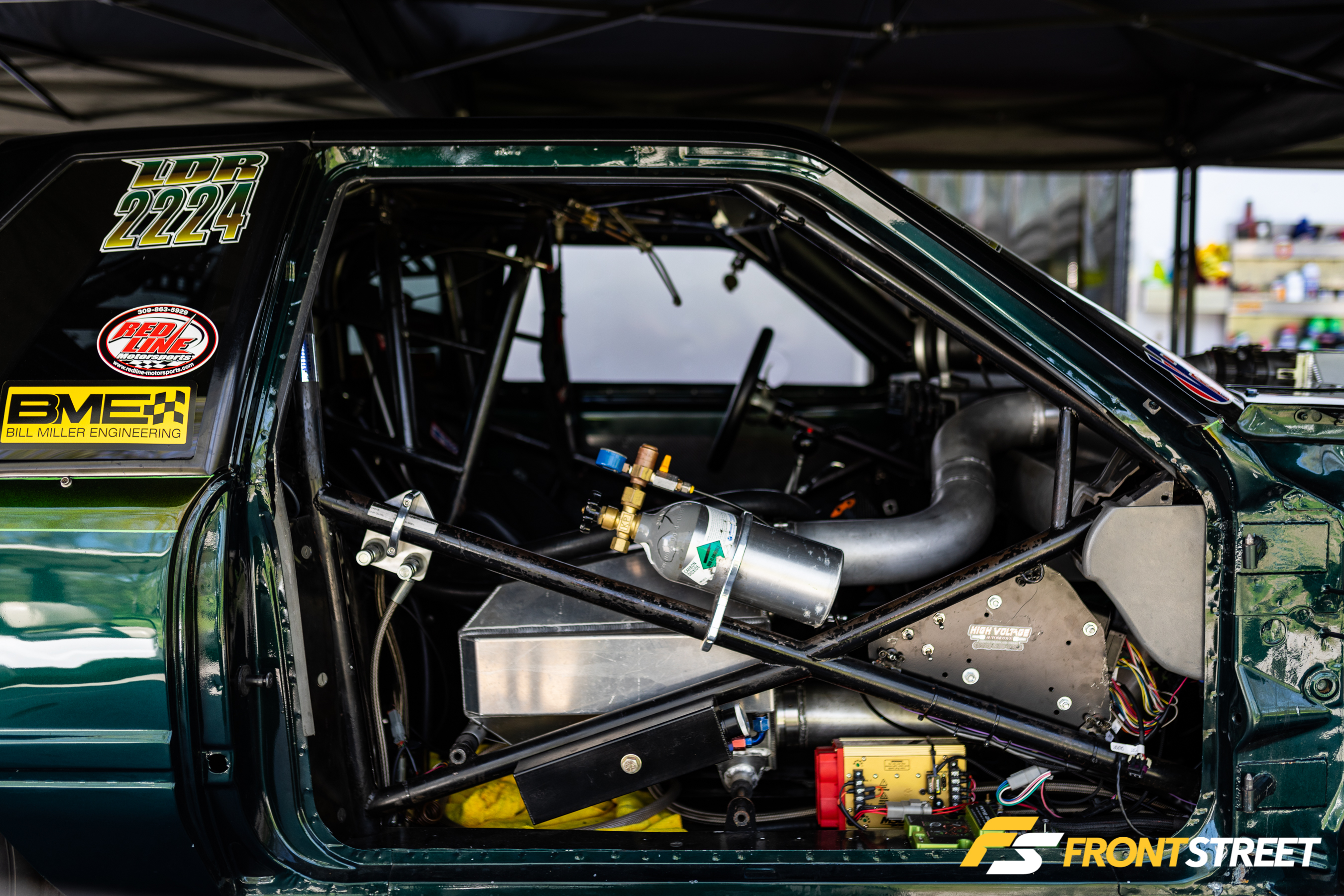


At the beginning of Gumby’s life, Monson was competing in Super Street with a small-block nitrous combination, but after running into fellow racers Rodney and Jesse Lambert at a race and watching them kick back and relax while their turbocharged combination cooled down, Monson vowed to never spend his time replacing another nipped piston or exploded hood scoop again.
“We were at NSCA in Hattiesburg, Mississippi, and I was running my nitrous car, leaking it down between runs, and we’re figuring out which piston we have to replace, which one’s hurt, and what we can run. So they’re over there drinking a Coke and hanging out. I walked over and said, ‘Is that turbo stuff as easy as it looks?’ ‘Yup. We used to be you. We were watching you, talking about how glad we were that that wasn’t us anymore,’” he recalls.




Then came the move to the turbocharged combination, and he’s never looked back. Jim and I met on an internet forum not long after he built the car, and I’ve followed his racing career over the last 20 years. Over that time, he’s raced in NSCA Super Street, NMRA Outlaw 10.5, NMCA Super Street, along with Outlaw 10.5 at the Milan Dragway Heads Up Series, and continues today in the Limited Drag Radial series that’s contested at several tracks around the country. These days Jim has a bit more disposable income, so he enlisted Dave Zimmerman and the staff at Team Z Motorsports to do some chassis updates, including a brand-new anti-roll bar, stiffer four-link brackets, shock valving, and chassis setup to ensure the car works well for radial-tire action.


“One of the biggest reasons it works better now is that I took it to Dave for these updates. Having brackets and doodads and tubing is one thing, but having a guy that knows how to make the whole thing work as a system is another. I have enough experience with what I learned when the car was an Outlaw 10.5 car that I went to Dave and said, ‘I could figure this out on my own in a few years, or I can put my tail between my legs and say, can you please help me make this car go down the track?’ He’s been a huge help to the radial program,” says Monson.


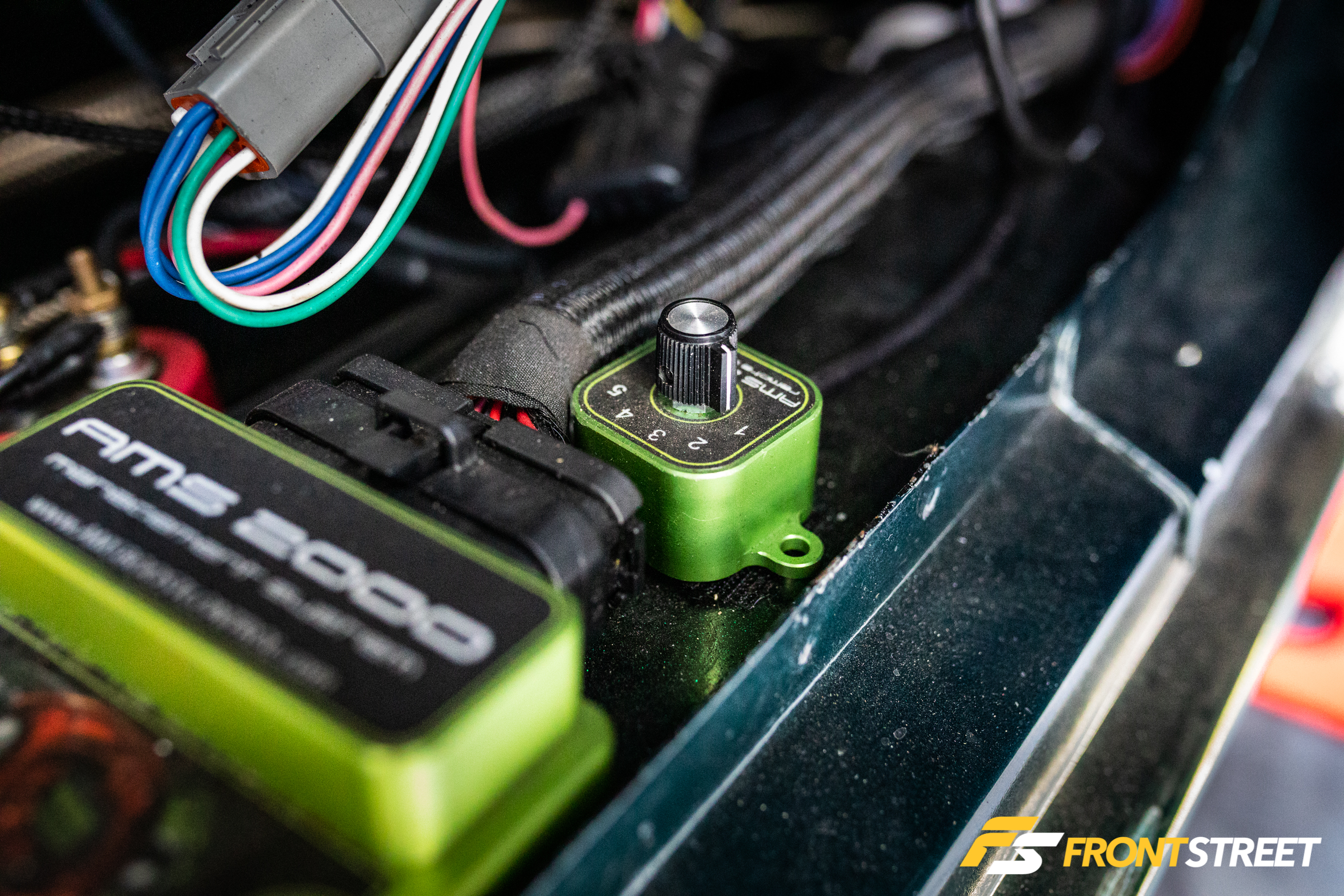
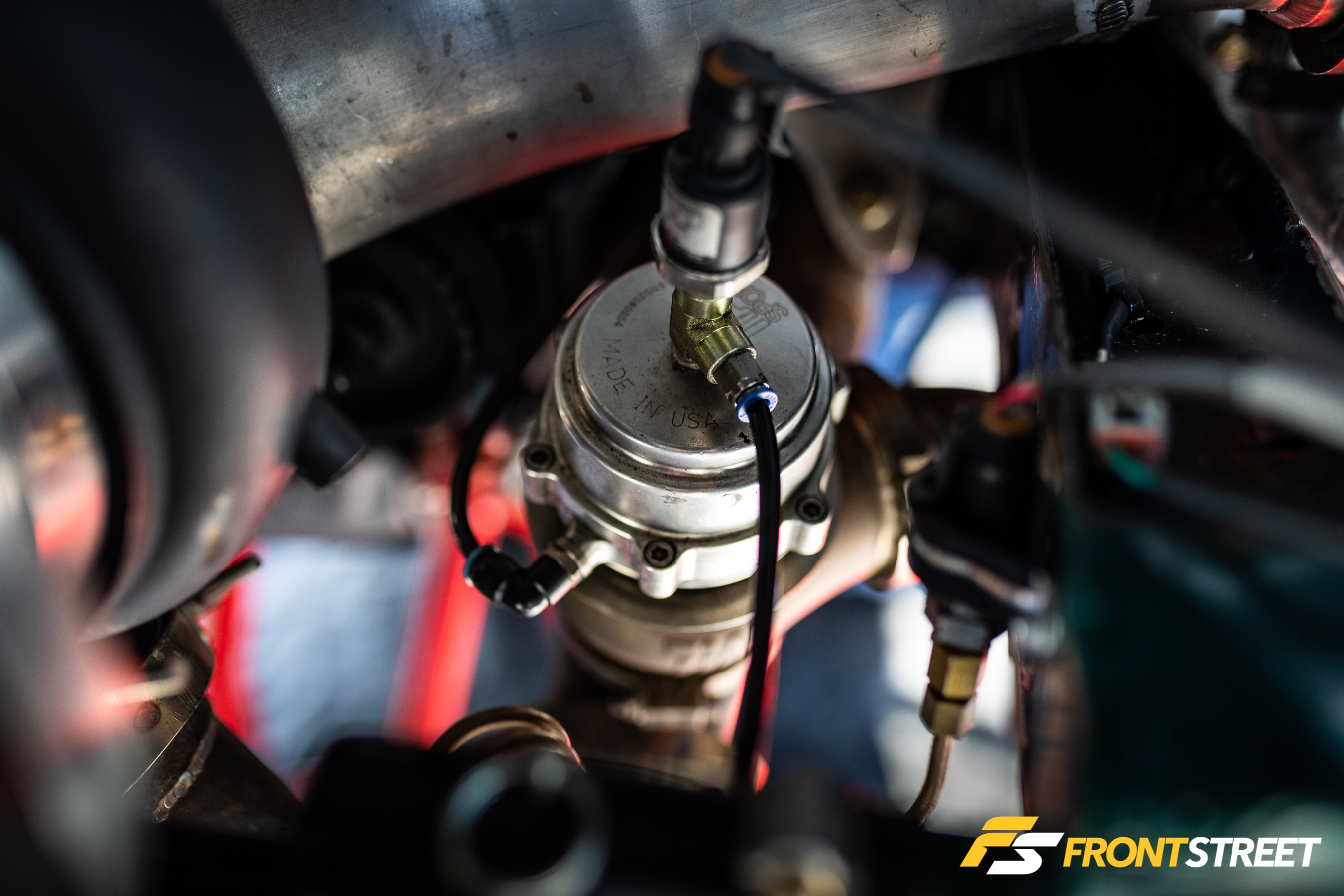
The learning curve while racing the Mustang on the radial tire has proven to be quite different from what he faced racing on the 33×10.5W slick all those years in Outlaw 10.5 and Super Street. He uses BigStuff3 engine management, Racepak datalogger, and NLR Systems’ AMS200 boost controller to get the car down the track. Track prep these days is more consistent from track to track and event to event, which means he can prepare to race the car rather than wondering whether his tuneup is going to be adequate for the conditions.
“With the radial, I have to be more precise with the power management to get it to go down the track. You also have to be better at reading the track. On the slick, if you get a little wheelspeed and you’re riding the wheelie bars, you can probably drive through it. But with a radial as soon as you spin, you’re done. And if you go too slow, then you’re going to leave too much on the table and lose, so you really have to manage the power,” he says.




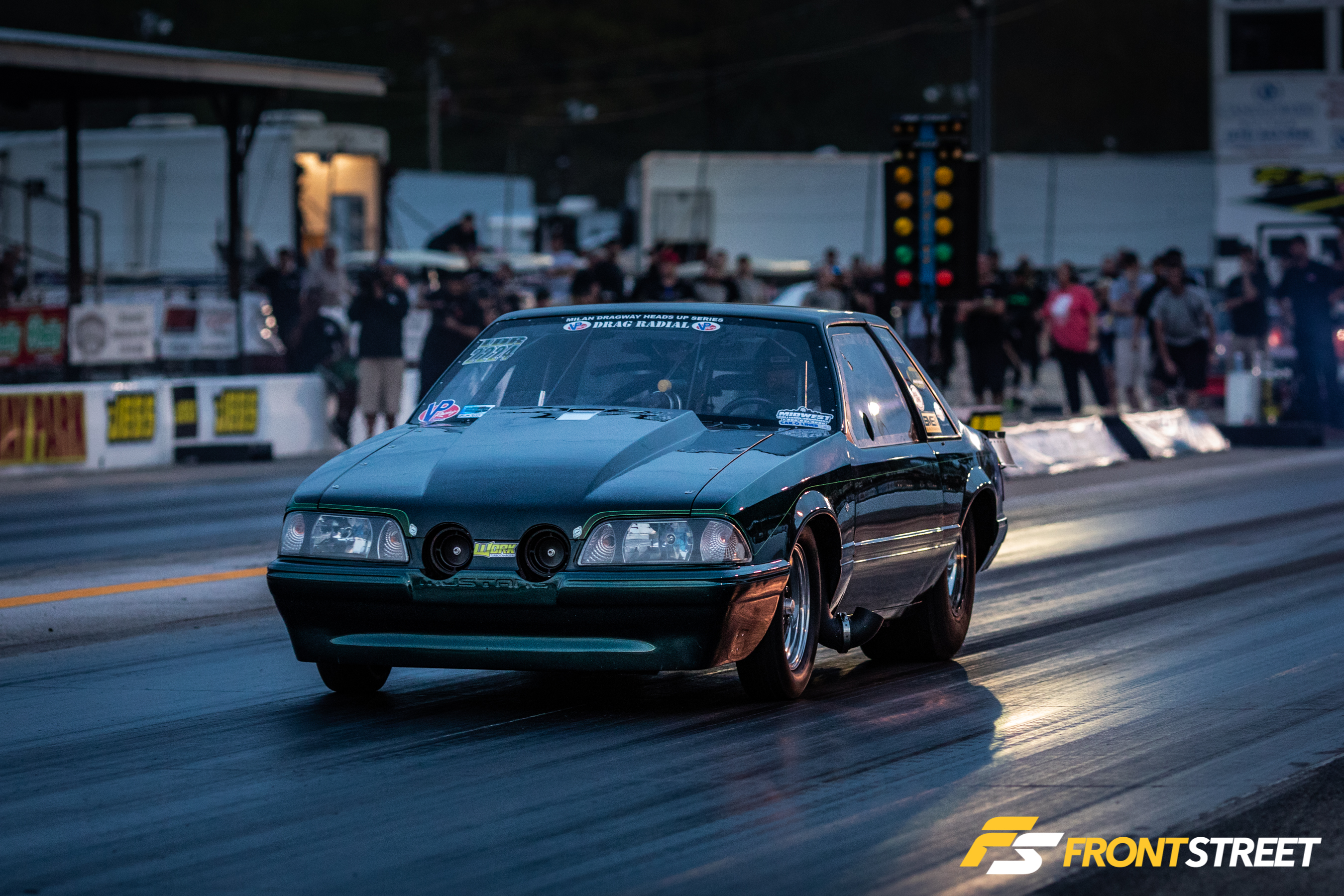
One thing that’s different about Jim as compared to many of the racers we’ve featured over the years is that he has a very strong sense of life balance versus racing time. During our near-hour-long phone conversation to talk about Gumby and Jim’s racing life, several times he referred to the fact that he has never gone all-out with the racing program like he could if he lived in a smaller house, or spent less money on his family, or some of the other things he does with his money.
Racing will always be a passion of his, but he won’t take away from the family and start putting peanut butter and jelly sandwiches on the dinner table. I can’t say I blame him here—he’s got two boys in college, and as the old saying goes, “happy wife, happy life.” It seems to be working for him so far.



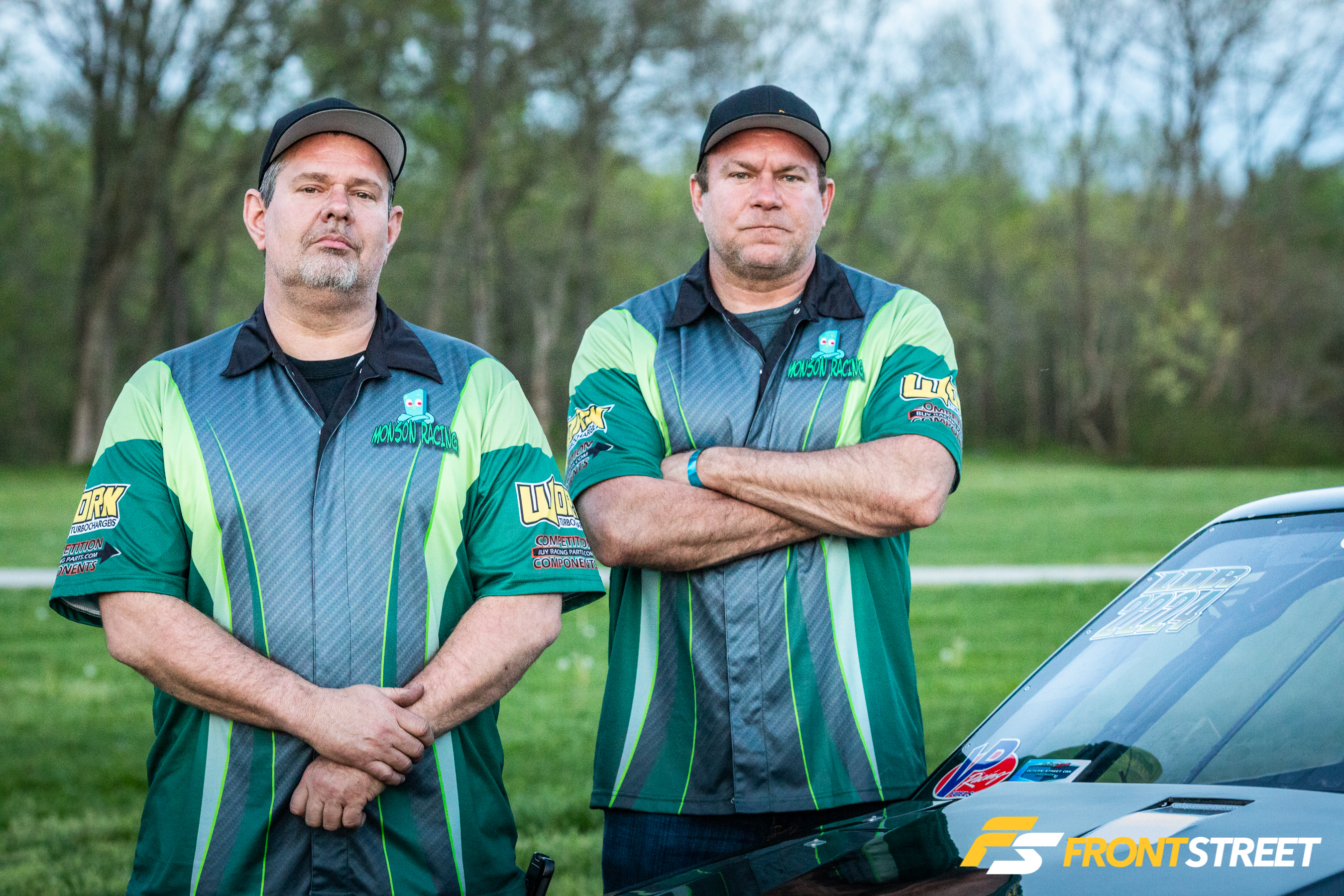
No racing effort is complete without a group of people providing support, and Jim has had more than two decades of backing and encouragement from his wife, Christina. Neal Rice is the glue that gets the Mustang down the track consistently while making sure Jim doesn’t make any bonehead mistakes. Work Turbochargers, Hutch’s Transmission Service, VP Fuels, High Voltage Wiring, Team Z Motorsports, and Billy Briggs Racing Engines all have a hand in the program. Briggs is in the middle of building an all-new engine for Monson as of this writing, the first that’s been in Gumby’s belly in several years.




All these years later, there are two constants in Monson’s program—he’s still running the turbocharged combination, and he’s still racing that same chassis he purchased from Chassis Engineering back in 1998 stuffed under the Mustang shell he picked up for $800. Gumby is nicely broken in, like your favorite pair of running shoes, and Monson continues to show up whenever and wherever he can to chase those racing dreams.
“You don’t have to buy a $100,000 chassis and a $100,000 engine. If you want to do the work, you can do it yourself. It’s just going to be a little bit harder,” he sums up.










